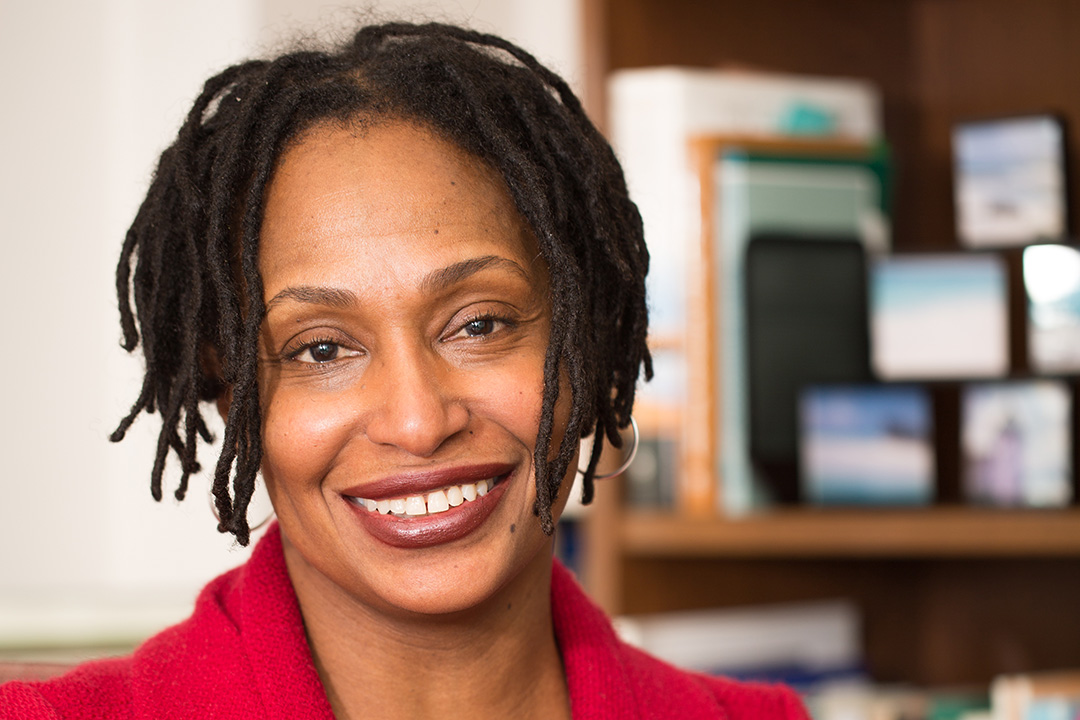By B.L. Wilson
The names are all too familiar: Eric Garner, Philando Castile, Walter Scott and Tamir Rice, a few from a long roster of unarmed African Americans killed in encounters with police officers.
The George Washington University Black Law Student Association in conjunction with the GW Criminal Law Initiative held a town hall Monday evening at the Michael K. Young Faculty Conference Center to look at the ways in which the legal profession has approached these cases.
Roger A. Fairfax Jr., the Jeffrey and Martha Kohn senior associate dean for academic affairs and research professor of law and director of the Criminal Law Initiative, introduced a panel of legal scholars and attorneys involved in investigations, prosecutions and research surrounding police killings.
The first speaker, Kristin Henning, associate dean of clinics, centers, institutes and experiential learning at Georgetown University Law Center, focused on a special group of victims of police killings that includes LaQuan McDonald, Tamir Rice and Jordan Davis, who were between the ages of 12 and 17 when they died.
In a country that outlawed the death penalty for children in 2005, she said, “what we see on the streets is literally nothing short of the summary execution of black children…most of whom haven’t done anything at all.”
Ms. Henning said there is considerable research showing that black children are perceived not only by police officers but also by civilians as being much older than they are and more culpable than Latino or white youths when assessing their possible involvement in a crime.
“[Encounters] escalate into physical violence, into arrests,” she said. “Our children are arrested for things we call contempt-of-cop violations, disorderliness, the talking back offenses” that can lead to charges of assault.
She said her goal is to get police to see black children as children and to get police out of schools.

Panelists left to right: Alvin Bragg, Kristin Henning, Renee McDonald Hutchins and Jared Fishman, JD '04.
Alvin Bragg, a visiting professor at New York Law School, served on a special unit of the New York Attorney General’s Office that investigated police killings of unarmed persons in response to growing concerns from activists and community groups.
“Moms and uncles, and a couple of aunts and dads, had basic concerns” about district attorney offices that failed to return their calls, treated them like defendants instead of victims and did not allow them to see bodies of their family members.
Few of the investigations led to prosecutions or convictions. District attorneys were sometimes uncooperative and recalcitrant. In each case, however, Mr. Bragg said, “transparency,” a full report of what happened, provided some comfort to the family.
“So get the evidence, analyze it and tell the public what you found,” Mr. Bragg said.
Renee McDonald Hutchins, a visiting professor at GW Law, spoke of how the Supreme Court has introduced race into rulings from the internment of Japanese Americans to “the fever pitch era in race relations” of the late 1960s and subsequently that have ratcheted up the number of encounters between police and civilians on the basis of very little suspicion of wrongdoing even for nonviolent offenses.
“The more police can lawfully and forcibly engage with civilians, the more likely you are to see violence and death,” she said. “I would like to see us to start to wind back from Terry,” a 1968 Supreme Court ruling that allowed police officers to search someone without probable cause if they have a reasonable suspicion of wrongdoing.
Jared Fishman, JD ‘04, senior prosecutor in the Department of Justice Civil Rights Division, successfully prosecuted Michael Slager, the officer who killed Walter Scott in South Carolina.
According to Mr. Fishman, that successful conviction on federal civil rights violations has often been attributed to “the clearest video of an unlawful police shooting ever,” although it is forgotten that the state’s trial of the officer resulted in a hung jury.
He said he once lost a case against an officer who was seen on camera using a taser 29 times on a semiconscious Native American.
“Prosecuting police for abuse has got to be one of the hardest types of cases to handle in the criminal justice system because of systemic racism, a presumption of innocence…and an inherent desire of jurors not to second guess police officers even in cases where there is video,” he said.



